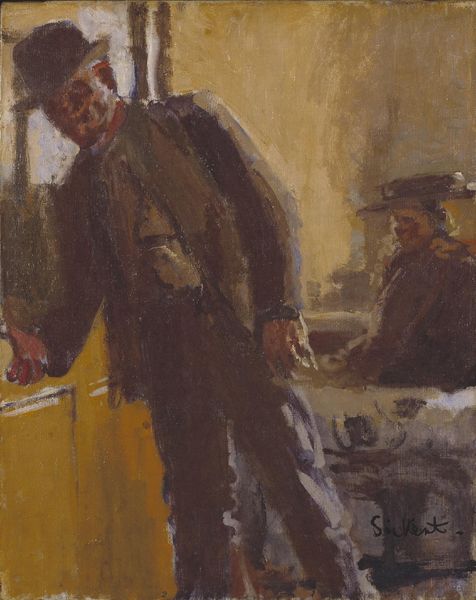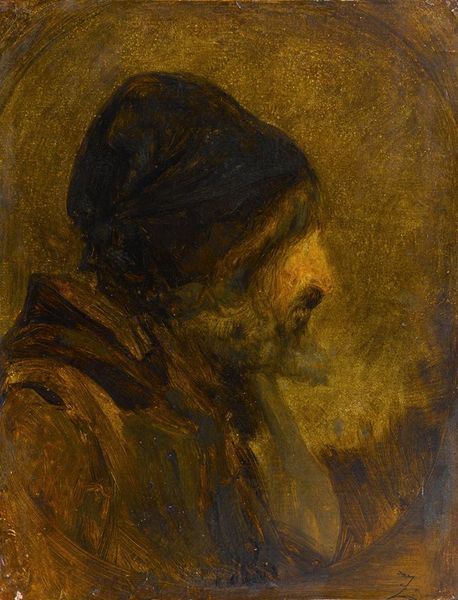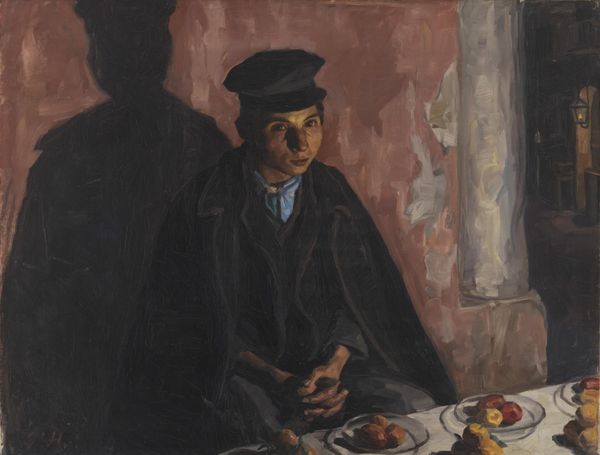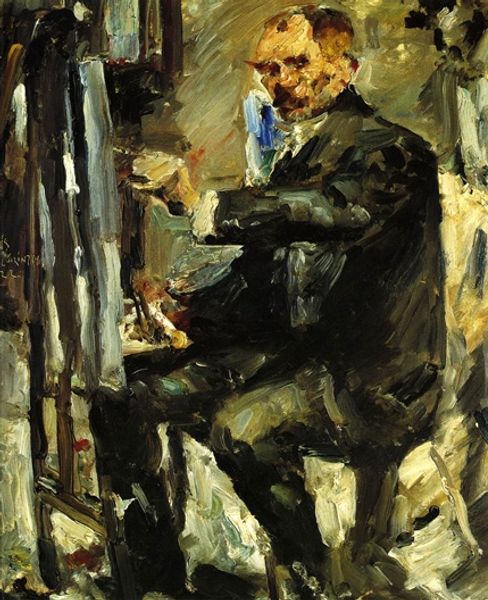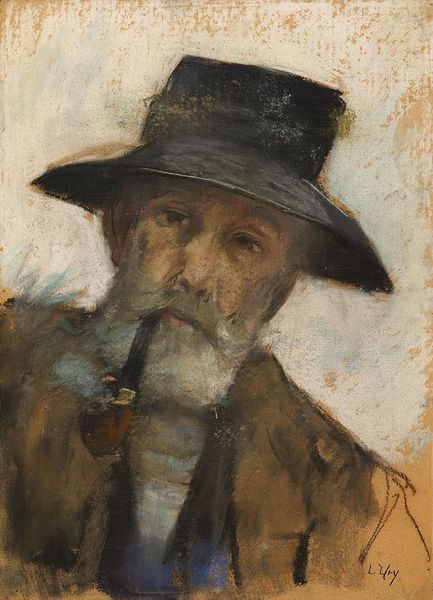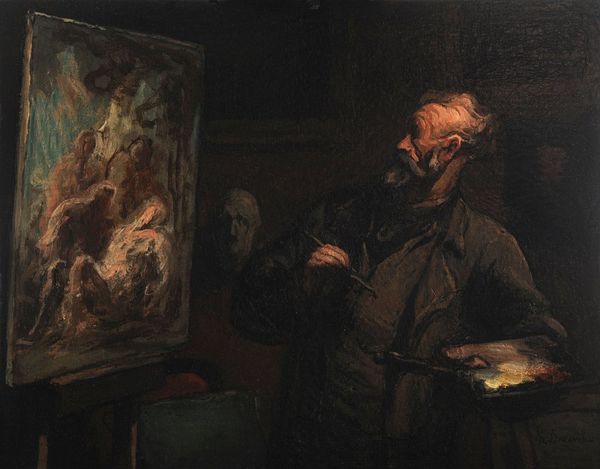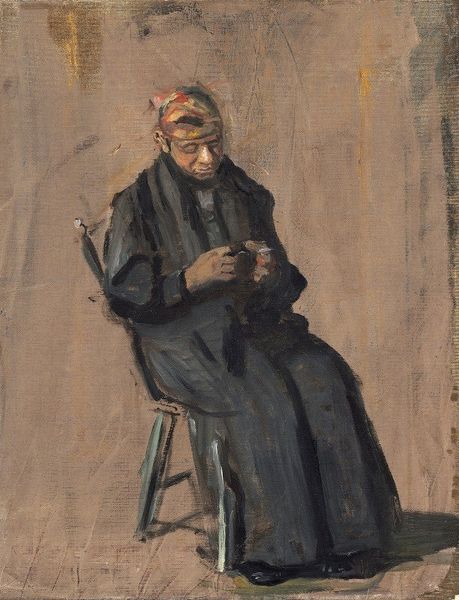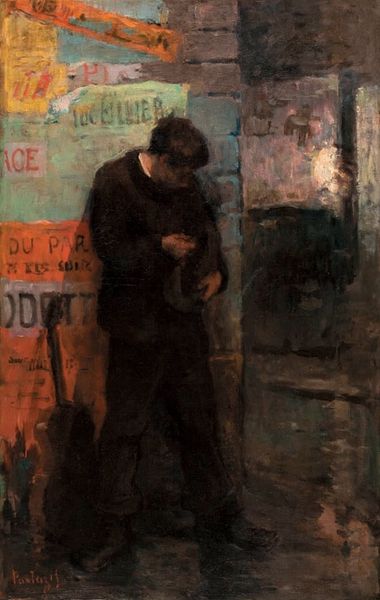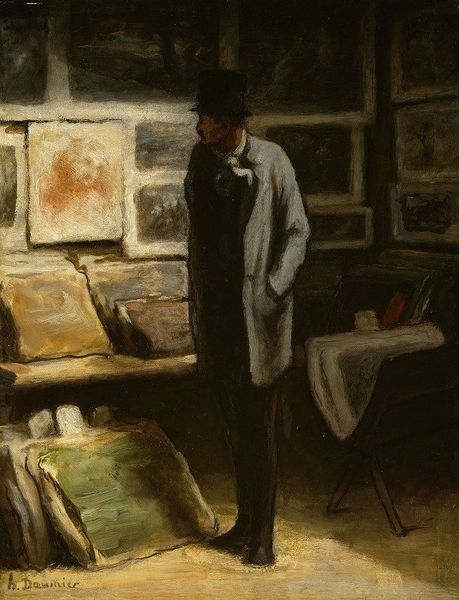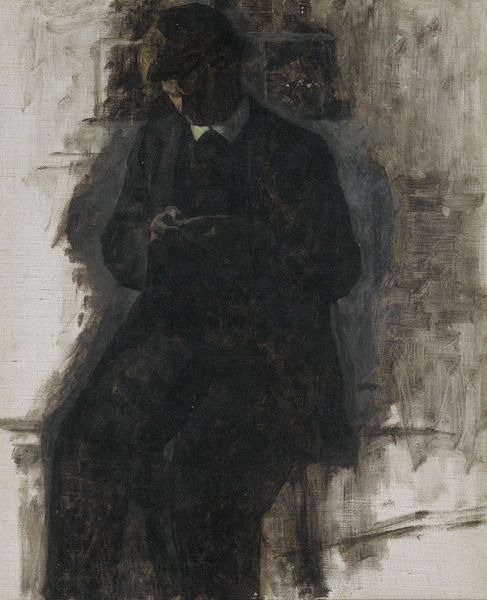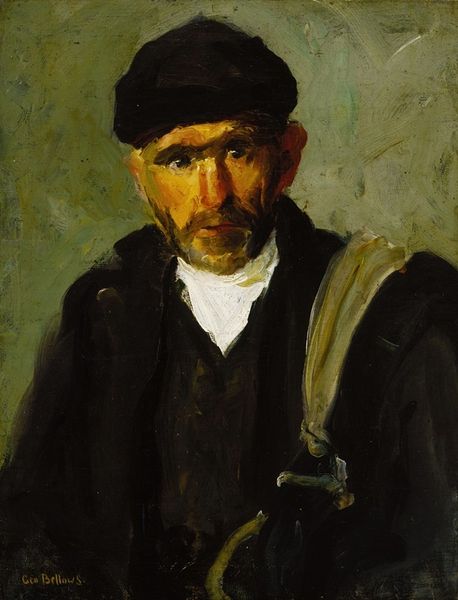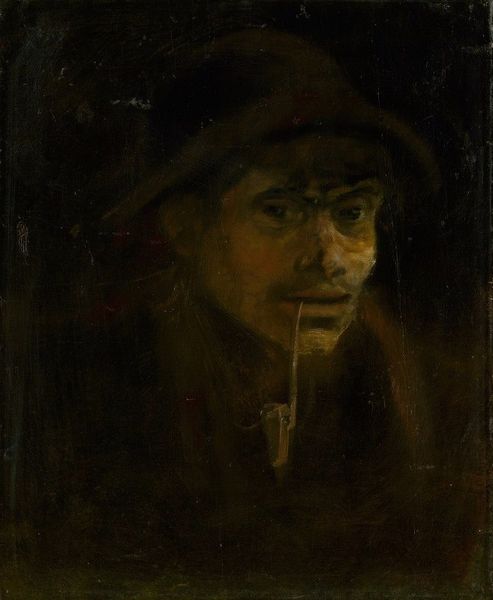
Dimensions: support: 997 x 597 mm
Copyright: CC-BY-NC-ND 4.0 DEED, Photo: Tate
Editor: Here we have Antonio Mancini’s "Portrait of the Artist’s Father," currently at the Tate. It's a moving and intimate portrayal. How does this painting reflect the broader societal context of Mancini's time? Curator: It's interesting how Mancini uses this intimate portrait to subtly challenge the rigid academic styles of his era. The loose brushwork and the inclusion of studio objects—the bust, the sketch—blur the lines between the personal and the public persona of the artist. Do you see that tension? Editor: Yes, absolutely. It's like he's inviting us into his world, both family and studio. I never thought about it as a commentary on the art world itself! Curator: Exactly! It elevates the everyday, suggesting the artist's studio, the very act of creation, is worthy of our attention, reflecting a shift in societal values around art and its production. Editor: That’s fascinating. I’ll definitely look at Mancini's work differently now. Thanks!
Comments
tate 7 months ago
⋮
http://www.tate.org.uk/art/artworks/mancini-portrait-of-the-artists-father-n03687
Join the conversation
Join millions of artists and users on Artera today and experience the ultimate creative platform.
tate 7 months ago
⋮
The Italian portrait painter Mancini was a fellow pupil with Sargent in Paris under the academic portraitist Carolus-Duran. Sargent and Mancini remained friends, and Sargent did his best to encourage his popularity in London. Mancini lived in London at the beginning of the century, and sold portraits to a number of Sargent's patrons. This portrait of his father was included in a huge exhibition of modern Italian painting held at Earl's Court in 1904. It was shown again in the New English Art Club the following year. Sargent himself owned another version of it. Mancini's technique developed in an extraordinary way, and in later pictures he incorporated a network of gauze into the material of his paint. Gallery label, September 2004
